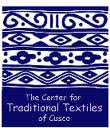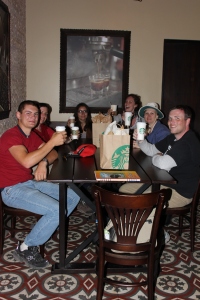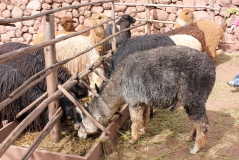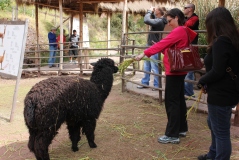Buenos Dias Peru-fans!
Well I am still pondering indigenous textile manufacture this week. Last time I shared our experience at Awanakancha in Pisac. This week I would like to tell you about the Textile museum we visited in downtown Cusco.
Team Jaguar (we adopted a name for our group while traveling, silly but fun) visited the Center for Traditional Textiles in Cusco on our last day there. It was our “free day,” a day where we had no set itinerary and could wander at will. The day itself was a refreshing break from our 10 days of rigidly scheduled travel. Don’t misunderstand me, it was important to stick to our tight schedule in order to see all the wonderful things Peru had to offer, however, after 10 days the free day felt extremely decadent.
The funniest thing was, that we all ended up finding each other anyway – at Starbuck’s 🙂 As a side note, we were desperate for a brewed cup of coffee by then. Shocking I know! All that wonderful specialty coffee grown in Peru that we purchase here in the U.S., at a premium, well they don’t actually drink it there. It is grown for export. Nescafe instant coffee is what is imbibed by the locals in their homes. Yuck, Yuck, Yuck – and as an anthropologist I should not judge others by my own standards – I know this in my soul – but really, Yuck, Yuck, Yuck! My coffee that morning brought a tear to my eye out of pure joy. I will never take my coffee pot at home for granted again, I promise.
Anyway, I digress. What I really wanted to talk about was the textile museum. I shall circle back around to the topic at hand.
We spent the day wandering around Cusco, exploring at our own pace. Pachamama (better known as Pam) had found the Museum earlier in the week and we decided to visit. We wandered through the exhibits learning about the history of textile manufacture in Cusco. Upon exiting the exhibit area we found ourselves in the museum shop (of course) but there were also a group of weavers sitting on the floor in a circle weaving textiles on their back looms. Even though I had already purchased a lovely textile for my home at Awanakancha, I, as well as the rest of Team Jaguar, managed to find a few more treasures to bring home with us from the Museum.
 Centro de Textiles Tradiccionales del Cusco
Centro de Textiles Tradiccionales del Cusco
Centro de Textiles Tradiccionales del Cusco is a non-profit organization founded in 1996 established to document ancient pre-columbian textile traditions. Their goal is to recapture the history of these traditions and spread information about the production of traditional textiles. The center also provides support to communities of weavers through research and documentation of weaving techniques, styles, and design. These textile traditions and practices date back thousands of years in are an important symbol of cultural identity. Weaving was and still is a form of communication with codes and figures that represent a textiles: place of origin, weaver who created it, and an artistic representation of Andean cosmology. The weaving patterns of each community differs in design, color schemes, and materials used. Each community has their own unique patterns that can be used as a marker of identity.
The center works with 9 communities in the Cusco area. Modern weavers still continue to create textiles by hand on belt or stake looms. Traditional dying methods use plants, insects, and minerals to dye the wool.
http://www.textilescusco.org/eng/index.html
Avenida Sol 603, Cusco-Peru (7/2/12)













